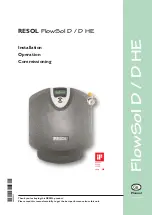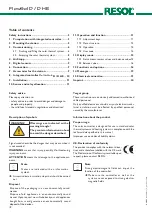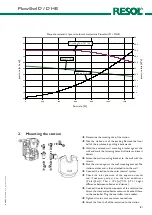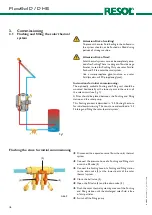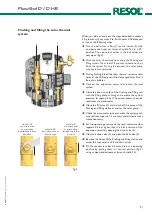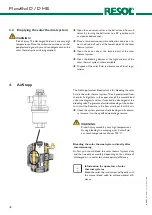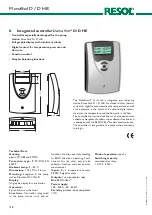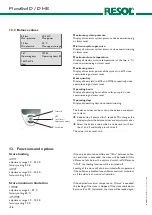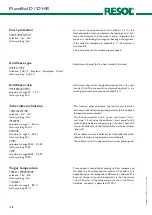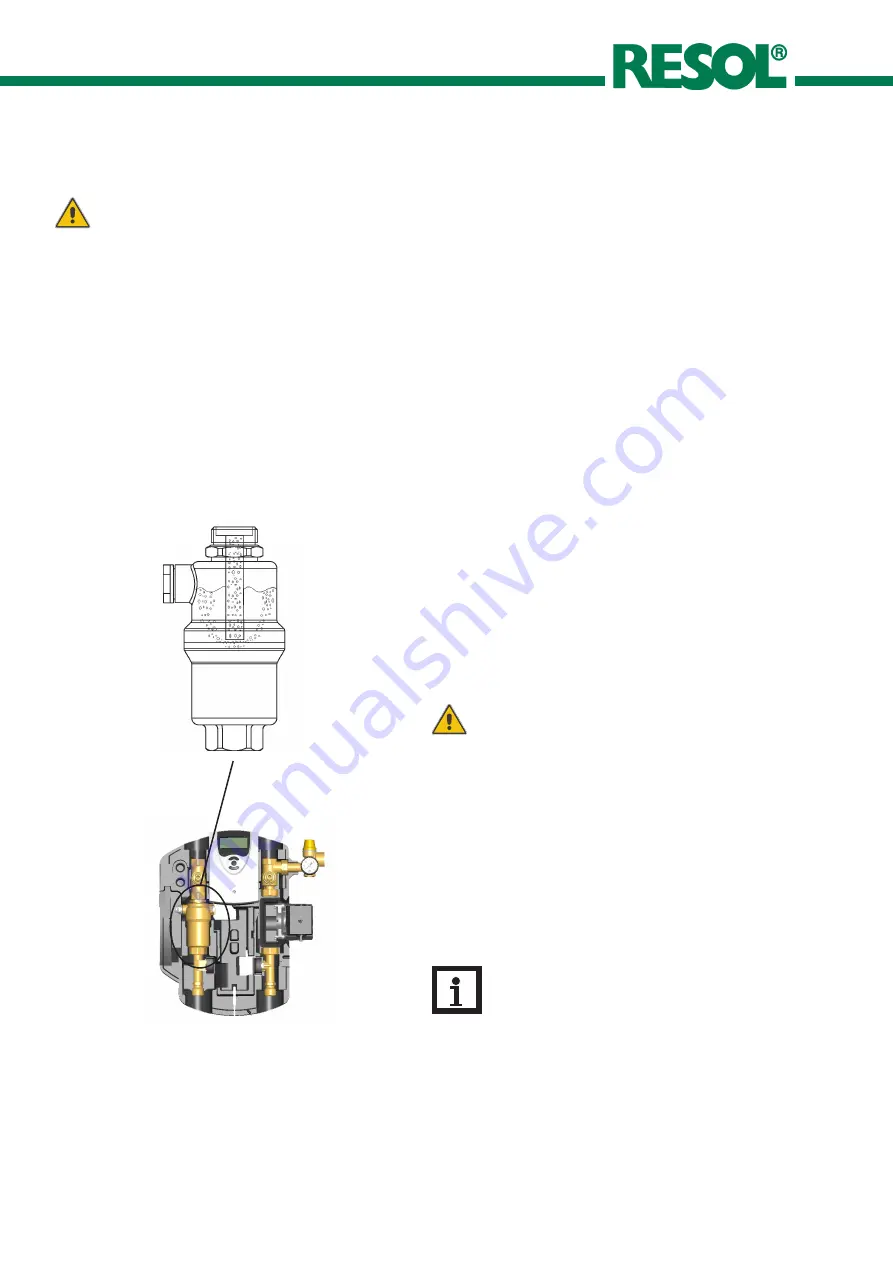
© RESOL 11294 flo
wsol_d_d_he
.monen.ind
d
FlowSol D / D HE
| 8
3.2 Emptying the solar thermal system
4. AirStopp
WARNING!
Risk of injury. The discharged fluid can have very high
temperatures. Place the collection container so that
people standing near by are not endangered when the
solar thermal system is being emptied.
Î
Open the non-return valves in the ball valves in flow and
return by turning the ball valves to a 45° position with
an open-ended spanner.
Î
Place a temperature-resistant collection container un-
der the drain ball valve at the lowest point of the solar
thermal system.
Î
Open the drain valve at the lowest point of the solar
thermal system.
Î
Open the bleeding devices at the highest point of the
solar thermal system, where available
Î
Dispose of the solar fluid in observance of local regu-
lations.
The AirStopp (manual bleed valve) is for bleeding the solar
fluid in the solar thermal system. The air precipitated from
the solar fluid gathers in the upper area of the manual bleed
valve (see diagram) and can, if required, be discharged at the
bleeding valve. To guarantee faultless bleeding of the collec-
tor circuit the flow rate in the flow must be at least 0.3 m/s.
Î
Check the system pressure after bleeding and if necessa-
ry increase it to the specified operating pressure.
WARNING:
Risk of injury caused by very high temperatures.
During bleeding the escaping air and solar fluid
can reach temperatures of over 100 °C
.
Bleeding the solar thermal system directly after
commissioning
At first you should bleed the solar thermal system daily
and then weekly or monthly, depending on the volume of
discharged air., in order to achieve optimal efficiency.
Information for operators of solar
thermal systems
Bleed the solar thermal system half-yearly with
the manual bleed valve to achieve optimal effi-
ciency.

